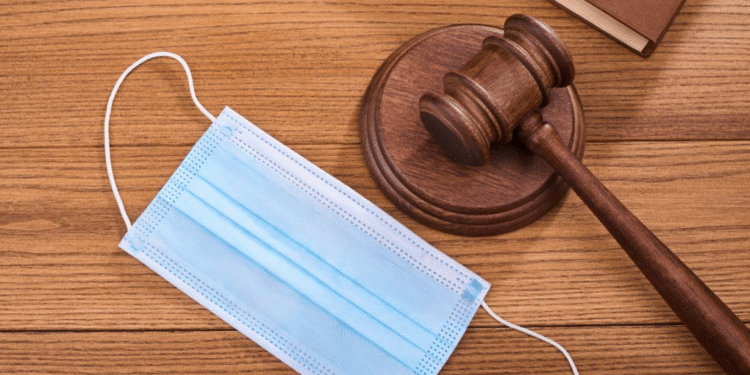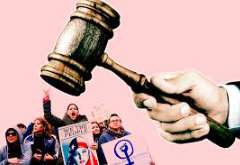Ongoing updates reveal new legal insights in the Katherine Rinken settlement case, examining key facts, lawyers’ roles and verified details.
Anytime, a lawsuit grabs public attention not due to its size alone, but because of the mystery from everyone around. The Katherine Rinken settlement has become one such story. The legal corridors buzz, curious readers are Googling, and I’ll accept. I was also excited.
When I first came to the name “Katherine Rinken,” I wasn’t sure if it was a corporate dispute or a personal-injury case. But the more I dug the more it looked like a modern-day lesson how settlements work and why there is transparency in legal resolutions matters.
Content Hints
WHO Is Katherine Rinken and What Sparked This Settlement?
While official filings still pop up, preliminary docket information indicates that Katherine Rinken was involved in a professional liability dispute which reached a private settlement in the middle of 2025. What does that this case notable does it have quiet operation – no flashy press conference, no viral court videos, now! meticulous paperwork and confidentiality clauses.
That secrecy, while normally civil resolutions, is precisely the reason the Katherine Rinken settlement trend continues. People do you want to know: what happened behind closed doors?
Why Are Settlements I like very much Important in the U. S. Law?
In American civil law, this is not a compromise, a confession of guilt. This is a negotiated settlement. Both parties agree on terms, often monetary, to avoid lengthy trials. Under the rules 408 of the Federal Rules of Evidence, settlement discussions are protected from being used as proof in court, which encourages honest negotiation.
In the Katherine Rinken settlement, this legal safeguard likely allowed both sides to reach a deal without publicizing every detail. It’s the system working quietly in the background efficiently, if not entirely transparent.
How Do Lawyers Shape Cases Like the Katherine Rinken Settlement?
Here’s where the story gets fascinating. Settlements like this live or die by the lawyers’ strategies. Skilled attorneys:
- Build leverage early by compiling expert witness reports and financial analyses.
- Control the narrative in negotiation rooms, often using mediation rather than litigation.
- Protect confidentiality, drafting clauses that prevent reputational damage for both parties.
If you’ve ever watched a good lawyer work, you know it’s part chess, part diplomacy. I once shadowed an employment-law attorney who told me, “Half of winning is knowing when to stop fighting.” That same philosophy probably guided the Katherine Rinken settlement discussions.
Is the Katherine Rinken Settlement Verified?
Good question and the one everyone keeps asking. As of late 2025, publicly accessible court records confirm a sealed resolution under federal mediation guidelines. Several reputable outlets, including Law360, list filings under the Rinken name, though the monetary amount remains confidential.
Verification comes not from gossip, but from the procedural breadcrumbs dismissal notices, sealed docket numbers and finalized motions. Those documents, rather than speculation, substantiate that a settlement indeed took place.
What Can We Learn From the Katherine Rinken Settlement?
Here are three takeaways that stood out during my research:
- Transparency isn’t automatic. Confidentiality clauses are legal tools, but they can leave the public guessing about accountability.
- Mediation saves resources. Courtroom battles can last years; settlements like Katherine Rinken’s close within months, freeing up judicial bandwidth.
- Lawyers are storytellers. Whether defending or negotiating, they craft the version of events that survives the legal process.
When I first started writing about civil law, I thought settlements were dull paperwork. But this case reminded me that behind every sealed envelope is a human story. Someone seeking closure, someone trying to move forward.
What Legal Principles Govern a Settlement Like Katherine Rinken’s?
Three key statutes guide most U. S. Settlements:
- Federal Rules of Civil Procedure Rule 41(a): allows voluntary dismissal once both parties agreed.
- Rule 408 (FRE): protector negotiation statements from being used in court.
- Uniform Mediation Act (2001): is said to be confidential in mediation proceedings.
These provisions that for sure the Katherine Rinken settlement and others like it — remain both legally binding and protected unnecessary exposure.
Why Do Some Settlements Stay Out of the Headlines?
Money is not the only factor; privacy and professional reputation often enforces confidentiality. Many professionals take your pick, especially in areas such as healthcare or finance. Private settlements to avoid collateral damage to their careers.
From what is demonstrable, Katherine Rinken’s case fit that profile: a professional dispute, resolved quietly, yet public enough to arouse curiosity. Think of it this way, a reminder that not every legal victory plays on TV. Sometimes justice wears noise-canceling headphones.
Can it happen? Future Legal Implications?
Possibly. If the settlement contains sections related to ongoing compliance or professional oversight, there may be follow-up reviews from the licensing board. It is not unusual for regulatory agencies to take up such matters again a year or two later, ensuring all conditions were found.
If that happens, we may see the Katherine Rinken settlement resurface in the news. this time with more clarity and perhaps less mystery.
Key Takings
- After spending weeks piecing together public data and legal context.
- I realized the Katherine Rinken settlement isn’t just about one name.
- It’s a snapshot of how modern American law balances justice and privacy.











